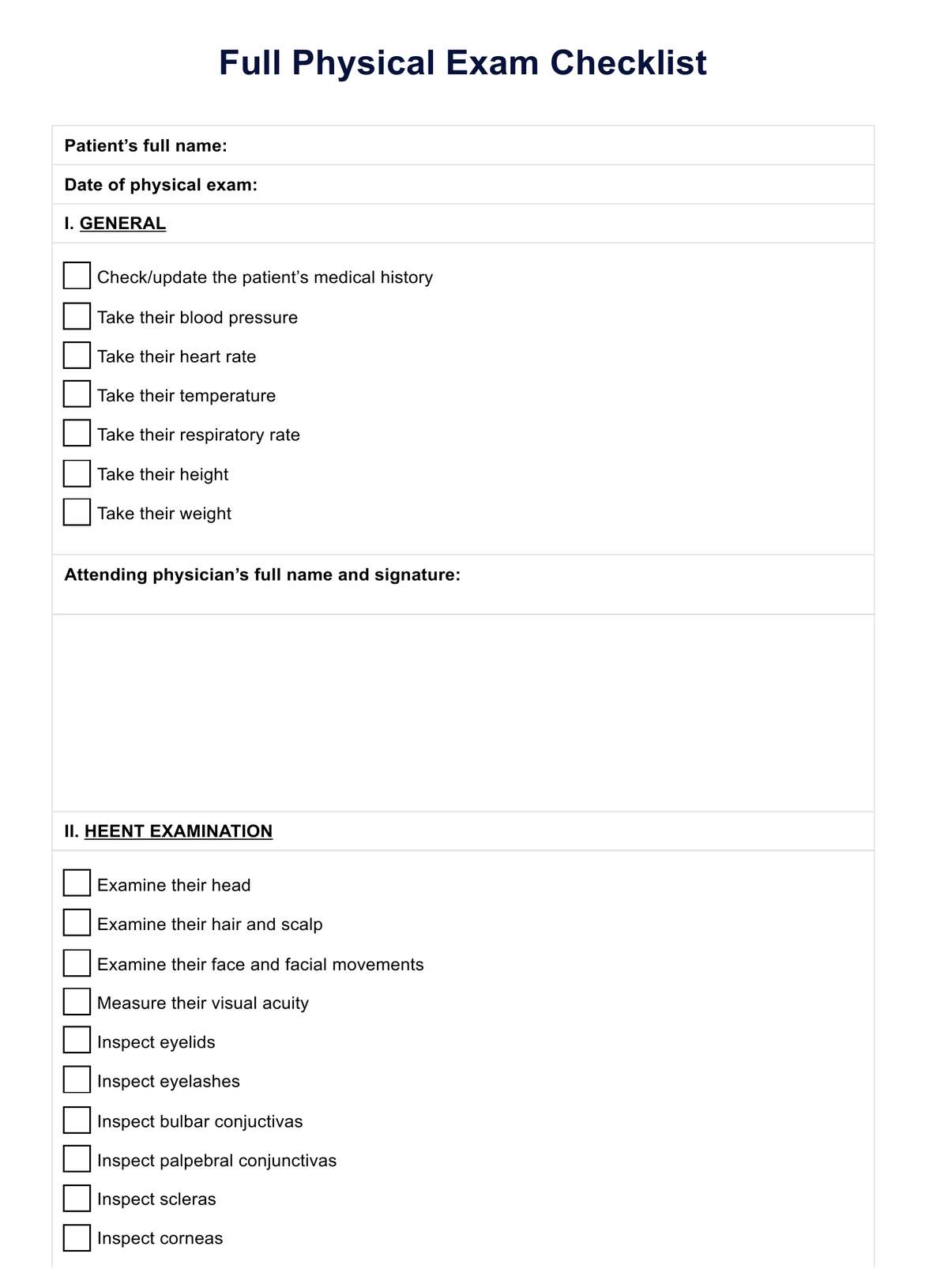
Learn about our Full Physical Exam Checklist PDF template and use it for your practice!

By Matt Olivares on Aug 08, 2024.
Fact Checked by RJ Gumban.


A full physical exam comprehensively examines a patient’s overall health. It’s done routinely (annually, quarterly, monthly), sometimes as a requirement set by employers to comply with local laws, and sometimes as a requirement set by healthcare professionals for patients with underlying conditions. Some patients voluntarily schedule full physical exams because they want to check on their physical condition consistently.
A comprehensive healthcare examination involves several crucial steps, each contributing to a thorough understanding of the patient's health. It begins by reviewing and updating the patient's medical history, which provides valuable insights into their health trajectory.
Vital signs, including blood pressure, heart rate, and temperature, are carefully assessed to evaluate the patient's health status. The examination then proceeds systematically, systematically evaluating different areas of the body.
Abnormalities are inspected in the head, eyes, ears, nose, and throat, while the chest and pulmonary function are thoroughly assessed to ensure optimal respiratory health. The examination further encompasses the heart, abdomen, extremities, and nervous system, leaving no aspect unexamined.
Musculoskeletal areas are thoroughly evaluated to evaluate mobility and detect signs of disorders. Laboratory analysis is crucial in collecting blood, urine, and stool samples. Additional specialized examinations may be conducted based on gender, providing a holistic view of the patient's health.
Lastly, while including a hernia examination may vary, these comprehensive examinations offer invaluable insights into the patient's well-being and inform their ongoing care.